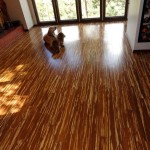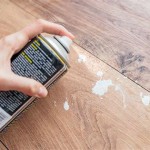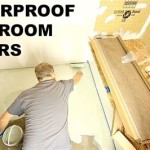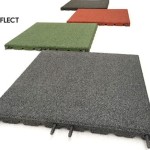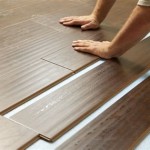How to Remove Linoleum Glue from Cement Floor Tiles
Removing linoleum glue from cement floor tiles can be a challenging task, often requiring patience and the application of appropriate techniques. The bond between linoleum glue and cement is typically strong, designed to create a durable and lasting connection. When linoleum is removed, the adhesive residue it leaves behind can be unsightly and interfere with any plans for future flooring or refinishing. This article outlines several methods for effectively removing linoleum glue from cement tiles, emphasizing safety precautions and appropriate tools for achieving optimal results.
Before commencing any removal process, it is crucial to understand the type of adhesive used. Linoleum glues can vary in composition, ranging from water-based to solvent-based adhesives. Identifying the glue type can significantly impact the choice of removal method. Unfortunately, determining the exact adhesive type after the linoleum is removed can be difficult. Therefore, a multi-faceted approach, starting with milder methods, is generally recommended to avoid damaging the cement tiles.
Proper preparation of the work area is another essential step. This involves adequately protecting surrounding surfaces from potential damage from solvents, heat, or scraping. Covering walls and adjacent flooring with plastic sheeting taped securely in place can prevent accidental staining or abrasion. Good ventilation is also paramount, especially when using chemical solvents. Opening windows and using a fan can significantly reduce the concentration of fumes and minimize health risks. Finally, always wear appropriate personal protective equipment (PPE), including safety glasses, gloves, and a respirator, to shield against irritants and potential hazards.
Key Point 1: Initial Removal with Mechanical Methods
The first approach to removing linoleum glue relies on mechanical methods. These techniques involve physically separating the adhesive from the cement tile surface. While potentially labor-intensive, mechanical methods offer the advantage of avoiding harsh chemicals, making them a safer option, especially in enclosed spaces or when dealing with potentially unknown adhesive compositions.
A floor scraper is a fundamental tool for mechanical removal. This tool typically features a long handle and a wide, angled blade designed for scraping surfaces. When using a floor scraper, it is important to apply consistent and even pressure. Angle the blade slightly to allow it to slide beneath the adhesive layer, lifting it away from the tile. Avoid applying excessive force, as this can gouge or scratch the cement tile surface. It is often beneficial to work in small, manageable sections, focusing on removing large chunks of glue before addressing any remaining residue.
A putty knife or chisel can be used for more precise work, particularly in areas where the scraper cannot reach, such as corners or edges. A putty knife can be used to gently pry up smaller pieces of glue, while a chisel, used with caution, can help break down thicker deposits. Always hold the chisel at a shallow angle to prevent damaging the tile. Tap the chisel with a rubber mallet to avoid creating sparks, especially when working with potentially flammable adhesives. Again, gentle and deliberate movements are essential to preserve the integrity of the cement tile.
For larger areas or tougher glue, a power scraper or floor buffer with an abrasive pad may be employed. These tools can significantly expedite the removal process, however, they also pose a greater risk of damaging the tile. The abrasive pad should be selected based on the hardness of the cement tile and the tenacity of the adhesive. Start with a relatively fine grit and gradually increase the coarseness as needed. Constant monitoring is crucial to prevent over-sanding or gouging the surface. A dust mask or respirator is essential when using power tools due to the potential for generating significant airborne particles.
Following the initial scraping, a stiff-bristled brush can be used to remove loose debris and remaining adhesive fragments. Sweep or vacuum up all removed glue and dust immediately to prevent them from being spread around the work area. A thorough cleaning with a mild detergent and water will help to reveal any remaining adhesive residue that requires further attention.
Key Point 2: Utilizing Heat for Glue Softening
Heat can be an effective tool for softening linoleum glue, making it easier to scrape away. The application of heat weakens the adhesive bond between the glue and the cement tile, allowing for easier removal with mechanical tools. It is important to exercise caution when using heat, as excessive heat can potentially damage the cement tile or create a fire hazard. Avoid open flames or prolonged exposure to high heat.
A heat gun is a common tool for softening adhesive. When using a heat gun, hold it several inches away from the surface and move it in a sweeping motion. Avoid concentrating the heat on one spot for too long, as this can cause the glue to burn or the tile to crack. The goal is to soften the glue, not to melt it completely. Test the softened glue periodically with a scraper to determine when it is pliable enough for removal.
An alternative to a heat gun is a hairdryer. While a hairdryer is less powerful, it can still be effective for softening smaller areas of glue. It is also a safer option, as it poses a lower risk of overheating the surface. The hairdryer should be held close to the glue and moved in a circular motion. The softening process may take longer with a hairdryer than with a heat gun.
Another method involves using a steam cleaner. The steam penetrates the glue, loosening its bond with the cement tile. Direct the steam nozzle onto the glue for several seconds, then immediately attempt to scrape it away. The steam cleaner provides the added benefit of moisturizing the glue, which can help to reduce dust and fumes. Ensure the area is well-ventilated when using a steam cleaner.
After applying heat, promptly use a floor scraper, putty knife, or chisel to remove the softened glue. The glue will be easier to lift and should come away in larger pieces. Repeat the heating and scraping process as needed until the majority of the glue has been removed. Clean the surface with a mild detergent and water to remove any remaining residue.
Key Point 3: Employing Chemical Solvents for Persistent Residue
When mechanical methods and heat prove insufficient, chemical solvents may be necessary to remove stubborn linoleum glue residue. Chemical solvents work by dissolving the adhesive, making it easier to wipe away. However, it is crucial to exercise extreme caution when using chemical solvents, as they can be harmful to health and potentially damage the cement tile. Always read and follow the manufacturer's instructions carefully.
Several types of chemical solvents can be used to remove linoleum glue, including mineral spirits, acetone, and adhesive removers specifically formulated for this purpose. Mineral spirits are a relatively mild solvent that can be effective for removing water-based adhesives. Acetone is a stronger solvent that can dissolve a wider range of adhesives, including some solvent-based glues. Adhesive removers are often the most effective option, as they are designed to target specific types of adhesives. However, they may also be the most expensive.
Before applying any solvent to the entire surface, it is essential to test it on a small, inconspicuous area of the cement tile. This will help to determine if the solvent will damage or discolor the tile. Apply a small amount of solvent to the test area and let it sit for several minutes. Then, wipe it away with a clean cloth and check for any adverse effects. If the solvent does not damage the tile, it can be safely used on the larger area.
When applying solvent, use a clean cloth or sponge to saturate the glue residue. Allow the solvent to dwell for the recommended time, as specified by the manufacturer. This will give the solvent time to dissolve the adhesive. After the dwell time, use a scraper or putty knife to gently remove the softened glue. Wipe away any remaining residue with a clean cloth dampened with the solvent.
Multiple applications of solvent may be necessary to completely remove the glue. After each application, thoroughly clean the surface with a mild detergent and water to remove any remaining solvent residue. It is also important to thoroughly ventilate the work area to remove any lingering fumes. Dispose of used solvent-soaked cloths and containers properly, following local regulations. Always wear appropriate PPE when working with chemical solvents, including safety glasses, gloves, and a respirator.
Following any of these methods, a final cleaning of the cement tiles is necessary to ensure the removal of all glue residue and cleaning agents. A pH-neutral cleaner is recommended to avoid damaging the cement. Thoroughly rinse the tiles with clean water and allow them to dry completely before applying any sealant or new flooring.

How To Remove Linoleum Adhesive From A Concrete Floor

How To Finish Removing Linoleum Adhesive For Tile On Concrete Floor Hometalk

How To Remove Carpet Glue From Concrete 4 Proven Ways Network

Removing Linoleum Flooring Glue From Concrete Floor

How To Remove Vinyl Flooring Pvc Tiles Rolls From Concrete Slab

This Is The Easiest Way To Remove Linoleum Glue From Concrete Hometalk

Removal How To Remove Old Vinyl Tiles Home Improvement Stack Exchange

Best Ways To Take Out Even Impossible Remove Glue From Floors

Thinset Mastic And Glue Removal Craftsman Concrete Floors

The Fastest Way To Remove Bonded Vinyl Flooring From Concrete
See Also

